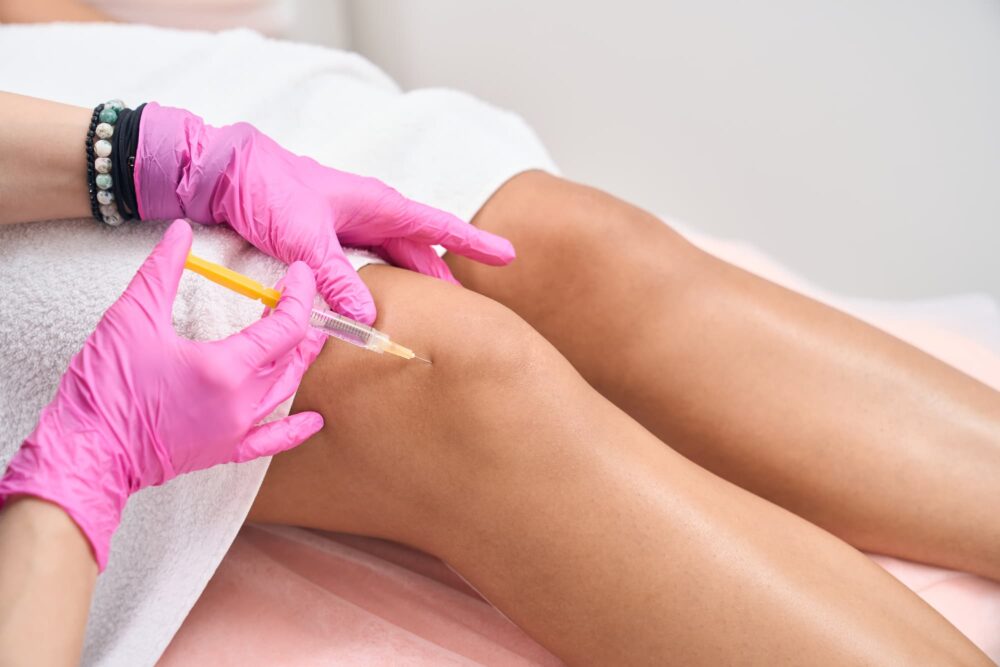In this article, we will delve into the science behind how stem cells aid in meniscus regeneration. The meniscus plays a crucial role in knee functionality, acting as a shock absorber and providing stability during movement. Unfortunately, injuries to the meniscus are common and often result in pain, swelling, and limited mobility. Stem cells have emerged as a promising solution for repairing and regenerating damaged meniscus tissue.
These remarkable cells possess the unique ability to differentiate into various cell types, including those found in the meniscus. By harnessing their regenerative potential, scientists are making significant advancements in developing effective stem cell therapies for meniscus regeneration. Join us on this scientific journey as we explore the potential implications and benefits that stem cell therapies hold for patients suffering from meniscal injuries.
The Importance of the Meniscus in Knee Functionality
The meniscus is crucial for proper knee functionality, and understanding its importance can help highlight the significance of stem cell therapy in meniscus regeneration. The role of meniscus tears in knee pain cannot be overlooked. These tears often occur due to trauma or degenerative processes, leading to pain, swelling, and limited range of motion. Surgical interventions for meniscus repair are commonly employed, including partial or total meniscectomy and meniscal repair surgeries. However, these procedures have limitations as they do not restore the natural structure and function of the meniscus.
This is where stem cell therapy comes into play. Stem cells have the ability to differentiate into various types of cells, including those found in the meniscus. By injecting stem cells into the site of injury, they can promote tissue regeneration and potentially restore normal knee functionality. Research has shown promising results in using stem cells for meniscus regeneration, with studies demonstrating improved healing outcomes compared to traditional surgical interventions alone. Harnessing the power of stem cells may revolutionize how we approach meniscus injuries and provide patients with better long-term outcomes.
An Introduction to Stem Cells and Their Regenerative Potential
Contrary to popular belief, stem cells possess incredible regenerative capabilities that can revolutionize medical treatments. Stem cell research has shown promising results in various clinical applications, including meniscus regeneration. These remarkable cells have the ability to differentiate into different types of cells and tissues, making them a potential solution for repairing damaged or injured menisci.
The use of stem cells in meniscus regeneration offers several advantages over traditional treatment methods. By harnessing the regenerative power of stem cells, it becomes possible to restore the structure and function of the meniscus without invasive surgeries or prolonged recovery periods. Additionally, stem cell therapy can stimulate tissue growth and repair, promoting natural healing processes in the knee joint.
Researchers are actively exploring different sources of stem cells for meniscus regeneration, such as bone marrow and adipose tissue. Through ongoing studies and advancements in stem cell technology, we may soon witness a breakthrough in treating meniscal injuries using these remarkable cells.
The Science Behind Meniscus Regeneration with Stem Cells
Within this discourse, we shall delve into the various categories of stem cells employed in the regeneration of the meniscus, as well as the mechanisms through which these cells are delivered. Our focus will encompass an examination of the unique attributes and benefits associated with each stem cell type, and how they are introduced into the impaired meniscus. Acquiring comprehension of these pivotal aspects will grant us profound insights into the scientific underpinnings of meniscus regeneration using stem cells, and its prospective implications within the realm of regenerative medicine. Moreover, this exploration will shed light on the promising potential for addressing knee inflammation through these innovative approaches.
Different Types of Stem Cells Used
Explore the various types of stem cells that are utilized in the fascinating field of meniscus regeneration. One type of stem cell used is embryonic stem cells (ESCs). These cells have the ability to differentiate into any type of cell in the body, making them highly versatile for tissue regeneration. However, their use is controversial due to ethical concerns surrounding their extraction from embryos.
Another type of stem cell commonly used is induced pluripotent stem cells (iPSCs). These cells are created by reprogramming adult cells, such as skin or blood cells, back into a pluripotent state. iPSCs have similar regenerative potential as ESCs but do not carry the same ethical concerns. Both types of stem cells hold great promise for meniscus regeneration. By harnessing their regenerative abilities, scientists hope to develop innovative treatments that can repair damaged menisci and restore normal knee function. Continued research in this field may lead to groundbreaking advancements in orthopedic medicine.
Methods of Delivery for Stem Cells
To effectively harness the regenerative abilities of stem cells, researchers have developed various methods for delivering these powerful cells to damaged menisci. Two common methods of delivery include injection and surgical implantation. Injection methods involve directly injecting stem cells into the damaged area of the meniscus. This can be done using a needle or through arthroscopic surgery. The advantage of this method is that it is minimally invasive, allowing for quicker recovery and less risk of complications. However, there is a limit to how many cells can be injected at once, and they may not distribute evenly throughout the meniscus.
Surgical implantation involves surgically placing a scaffold containing stem cells into the damaged meniscus. This allows for better control over cell placement and distribution within the tissue. However, it is a more invasive procedure that requires a longer recovery time.
Advancements in Stem Cell Therapies for Meniscus Regeneration
Significant progress has been made in developing stem cell therapies that offer hope for the regeneration of damaged meniscus, providing a promising solution to those who suffer from debilitating knee injuries. Researchers have been working tirelessly to overcome the limitations of stem cell therapy and improve its effectiveness. Clinical trials and extensive research have led to advancements in this field, resulting in more successful outcomes for patients.
One significant advancement is the use of tissue engineering techniques combined with stem cell therapy. By creating a supportive scaffold structure, scientists can enhance the integration and survival of transplanted stem cells within the injured meniscus. This approach promotes better healing and regeneration of the damaged tissue.
Additionally, researchers are exploring new methods for delivering stem cells directly into the site of injury. This targeted approach ensures that a higher concentration of stem cells reaches the affected area, maximizing their regenerative potential. These advancements bring us closer to finding a reliable and effective treatment for meniscus injuries using stem cell therapy. With continued research and clinical trials, we can hope to see even more breakthroughs in this field in the near future.
Potential Implications and Benefits for Patients
Envision the potential benefits awaiting patients like you, as the remarkable progress in stem cell therapies becomes a reality in the treatment of knee injuries. Stem cell therapies have demonstrated encouraging outcomes in regenerating the meniscus, offering a glimmer of hope to individuals grappling with knee injuries. These therapies not only hold the promise of relieving pain and discomfort, but they also have the potential to enhance patient satisfaction and the long-term effectiveness of treatment.
One of the primary advantages of stem cell therapies lies in their capacity to stimulate the body’s innate healing processes. By harnessing the regenerative capabilities of adult stem cells, physicians can foster the repair and growth of damaged meniscus tissue, leading to improved functionality and increased mobility. This means that patients may regain their full range of motion and return to their normal activities more swiftly. Additionally, stem cell therapies show promise in reducing the necessity for invasive surgical procedures such as meniscectomy or total knee replacement. This not only diminishes the risks associated with surgery but also minimizes recovery time and potential complications.
By capitalizing on the regenerative potential of adult stem cells, scientists are forging a path towards groundbreaking treatments that hold immense promise for patients with knee injuries. As research persists in this domain, we can eagerly anticipate even greater advancements in stem cell therapies and their profound implications for enhancing patient outcomes. The utilization of specialized cells from adult tissues, such as bone marrow transplants, may further contribute to these advancements, facilitating the regeneration of nerve cells and expanding the horizons of medical possibilities.
Final Thoughts
In conclusion, understanding the science behind how stem cells aid in meniscus regeneration is crucial for improving knee functionality. By harnessing the regenerative potential of stem cells, researchers have made significant advancements in developing therapies that can effectively regenerate the meniscus. This holds great potential for patients, offering them a non-invasive and effective treatment option that can improve their quality of life. With further research and development, stem cell therapies could revolutionize the field of orthopedics and provide long-lasting benefits for individuals suffering from meniscus injuries.





